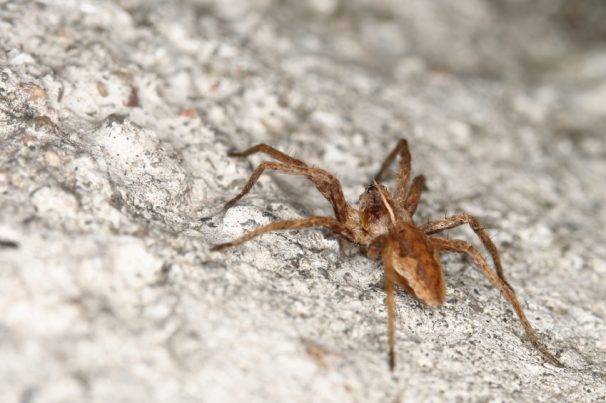
Spider silk advancement may treat wounds with controlled release of antibiotics
Tuesday, March 19, 2019 by Amy Goodrich
http://www.naturalnewsresearch.com/2019-03-19-spider-silk-may-treat-wounds-with-controlled-release-of-antibiotics.html

Spider silk that heals people. While this may sound like an odd scene out of the comic book series Spider-Man, scientists have developed synthetic spider silk infused with antibiotics that can be used in drug delivery, regenerative medicine, and wound healing.
Spider silk has long been known to scientists around the world as a marvel of natural engineering. Touted to be stronger than steel, researchers at the University of Nottingham now found that it can also aid in wound healing and recovery.
While we are still far from a spider web bandage, scientists showed for the first time how click chemistry can be used to adhere molecules, such as antibiotics or fluorescent dyes, to spider silk synthesized by E. coli bacteria.
A “click” away from a new era of wound healing
Click chemistry is based on a set of biocompatible reactions intended to join substrates of choice with specific biomolecules. After five years of research, the U.K. scientists have managed to “click” or attach molecules to either the silk proteins or the silk fibers.
The idea of using spider webs “decorated” with antibiotics or other compounds accidentally came together at a discipline bridging university meeting. During the meeting, Dr. Goodacre, who heads up the SpiderLab in the School of Life Sciences, and Professor Neil Thomas, a professor of Medicinal and Biological Chemistry, had the chance to combine their knowledge and the idea of tweaked spider webs was born.
According to the team, using spider silk as a bandage to treat wounded soldiers goes all the way back to the ancient Greeks and Romans. After cleaning the wounds with a honey vinegar mixture, balled-up spider webs were used to cover the wound and stop the bleeding.
The researchers took this ancient practice and modernized it with the click technology. They incorporated an amino acid with an azide group into the spider webs, which makes it possible for molecules, such as the antibiotic levofloxacin, to be attached or clicked into the web.
Once the antibiotics are connected to the silk fibers, the antibiotic silk can be weaved into a larger bandage that can easily disperse the drugs at a steady rate, retaining its antibacterial properties for at least five days. This new breakthrough could change the way we use bandages and speed up the healing process.
This is just the start
Spider silk is a protein-based, robust, biocompatible, and biodegradable material that usually does not cause immune, allergic, or inflammatory reactions, making it the perfect material to treat the more challenging or slow healing wounds. According to the researchers, this new technique can create a mesh that can accelerate the growth of new tissue and slowly release antibiotics to treat or prevent bacterial infections.
Professor Neil Thomas said: “There is the possibility of using the silk in advanced dressings for the treatment of slow-healing wounds such as diabetic ulcers. Using our technique, infection could be prevented over weeks or months by the controlled release of antibiotics. At the same time, tissue regeneration is accelerated by silk fibers functioning as a temporary scaffold before being biodegraded.”
Dr. Sara Goodacre added that this paper is just the start of an exciting series of studies using spider silk. The researchers are hopeful and eager to further unravel the possibilities of the newly engineered spider silk, possibly looking at other spider species and their unique silks for more inspiration.
“Some of the future work will also be supported by other, neat ideas from the world of spiders and their silk, which the SpiderLab is currently trying to unravel,” she noted.
The research was funded by the Biotechnology and Biological Sciences Research Council (BBSRC) and recently published in the journal Advanced Materials.
Sources include:
Tagged Under: Tags: antibiotic, bio materials, breakthrough, click technology, discoveries, future science, goodscience, goodtech, injuries, innovation, inventions, medical tech, research, science and technology, spider silk, spider web, Wound Healing, wounds





